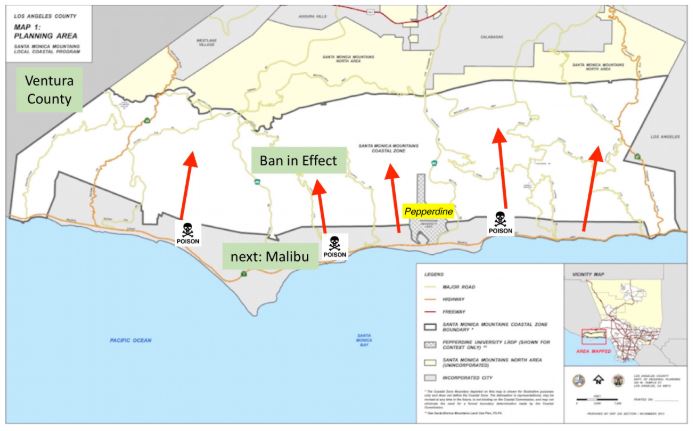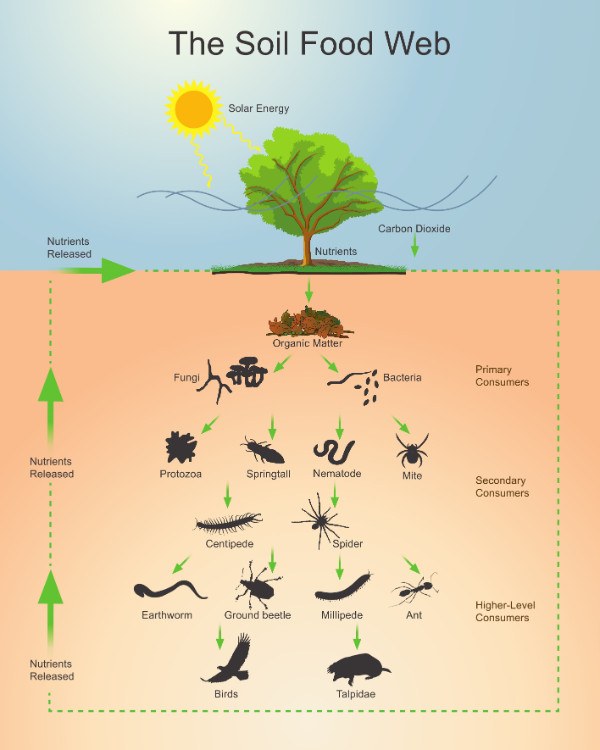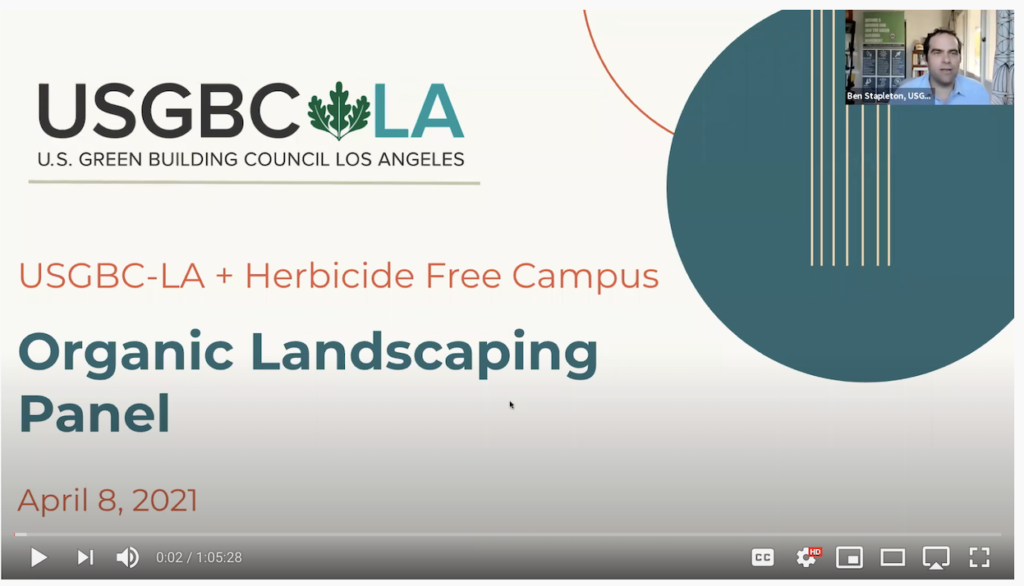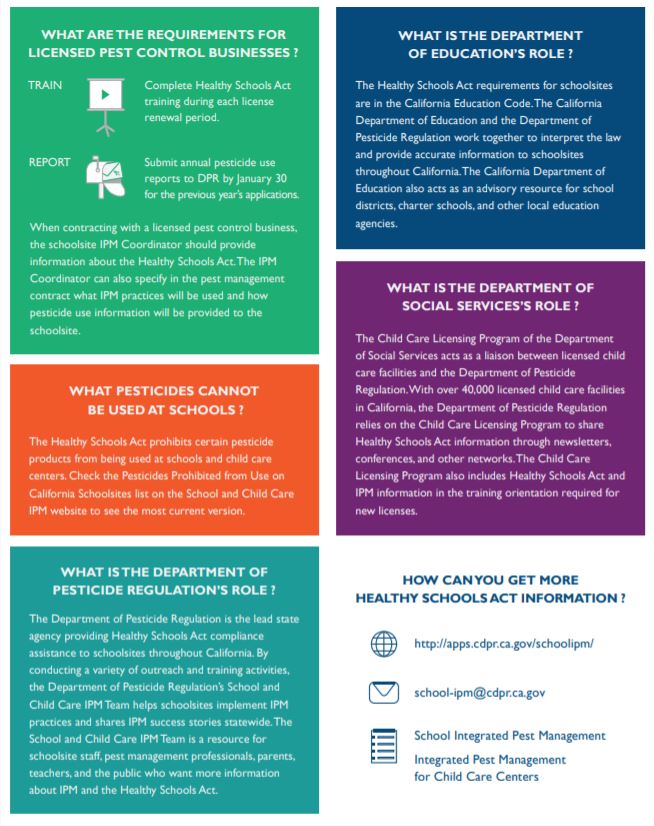Earth Friendly Management
What is Earth Friendly Management?
The Earth Friendly Management policy for the city of Malibu passed on June 27, 2019.
Special thanks to Mayor Jefferson Wagner and Council Member Skylar Peak and all of the City Council Members Rick Mullen, Karen Farer, and Mikke Pierson for moving the policy forward. Also, the founding members of Poison Free Malibu – June Louks, Linda Gibbs, Ann Buxie, and Wendi Werner Dunn. They devoted years to the vision of a Poison Free Malibu!
The intent of Earth Friendly Management (EFM) policy is to align with the City’s vision and mission statement to create a program that encourages biodiversity and ensures preservation of natural resources including the ocean, marine life, creeks, canyons, plant life, mountains, wildlife and open spaces.
The policy promotes a problem-solving strategy that mandates the use of preventative practices and enrichment strategies that promote healthy soil, plant life, wildlife and safeguarding of structures.
The policy will protect the health of citizens and pets by eliminating the use of hazardous chemicals and pesticides and shifting to environmentally compatible practices. It guarantees the rights of citizens the safe use of city structures and recreation areas.’
We face urgent health and environmental challenges and strong action is needed. With the rise of serious health problems including cancer, Parkinson’s disease, diabetes, reproductive failures, developmental disorders, autism as well as the steep decline in biodiversity, it is time to embrace an urgent transition to Green management.
Green means protection of the environment, addressing issues critical to sustainability, clean air and water, managing carbon through regenerative soil management, and eliminating fossil fuel dependent fertilizers and pesticides.
Organic practices maintain and enhance ecological balance that makes chemical fertilizers and synthetic pesticides unnecessary.
The policy will provide a model for a green future to all who wish to be released from the grip of the pesticide industry and incorporate organic standards, principles and values.
These practices are integral to a green future.
How can I be more earth friendly?
STEP UP!
STEP UP outlines actions that individuals and community-led EFM Advisory Committees can take to eliminate pesticides. These actions prioritize prevention over chemical intervention to reduce societal and environmental costs associated with poisoning our environment.
How does EFM work?
EFM policies promote the use of non-chemical methods for prevention and management of issues utilizing methods such as physical, mechanical, cultural, and biological controls.
Conventional control methods do not seek to address the underlying causes of infestations and instead rely on routine scheduled pesticide applications.
An EFM program that is truly accountable to community health strictly adheres to pesticide use policies formed by an EFM Advisory Committee, which should include a list of acceptable organic products for emergencies only.
What is Integrated Pest Management?
This section has been adapted from Beyond Pesticides (click logo above)
A well-defined Integrated Pest Management (IPM) is a program that should be based on prevention, monitoring, and control which offers the opportunity to eliminate or drastically reduce the use of pesticides, and to minimize the toxicity of and exposure to any products which are used. IPM does this by utilizing a variety of methods and techniques, including cultural, biological and structural strategies to control a multitude of pest problems.
IPM is a term that is used loosely with many different definitions and methods of implementation. IPM can mean virtually anything the practitioner wants it to mean. Beware of chemical dependent programs masquerading as IPM.
Those who argue that IPM requires the ability to spray pesticides immediately after identifying a pest problem are not describing IPM. Conventional pest control tends to ignore the causes of pest infestations and instead rely on routine, scheduled pesticide applications. Pesticides are often temporary fixes, ineffective over the long term.
Non-toxic and least toxic control products are a major growth area and new materials and devices are increasingly available in the marketplace.
The Six IPM Program Essentials
Monitoring. This includes regular site inspections and trapping to determine the types and infestation levels of pests at each site.
Record-Keeping. A record-keeping system is essential to establish trends and patterns in pest outbreaks. Information recorded at every inspection or treatment should include pest identification, population size, distribution, recommendations for future prevention, and complete information on the treatment action.
Action Levels. Pests are virtually never eradicated. An action level is the population size which requires remedial action for human health, economic, or aesthetic reasons.
Prevention. Preventive measures must be incorporated into the existing structures and designs for new structures. Prevention is and should be the primary means of pest control in an IPM program.
Tactics Criteria. Under IPM, chemicals should be used only as a last resort only, but when used, the least-toxic materials should be chosen, and applied to minimize exposure to humans and all non-target organisms.
Evaluation. A regular evaluation program is essential to determine the success of the pest management strategies.
IPM is a managed pest management system that:
- eliminates or mitigates economic and health damage caused by pests;
- minimizes the use of pesticides and the risk to human health and the environment associated with pesticide applications; and
- uses integrated methods, site or pest inspections, pest population monitoring, an evaluation of the need for pest control, and one or more pest control methods, including sanitation, structural repairs, mechanical and living biological controls, other non-chemical methods, and, if nontoxic options are unreasonable and have been exhausted, least toxic pesticides.
- Tools for Change
- Model Program
- Resources to Organize an IPM Policy
Precautionary Principle: Are any pesticides safe?
Emergency use of pesticides is the only acceptable use of pesticides. To optimize public safety and environmental quality, the use of all pesticides – even the Organic and Least Toxic certified products – should be minimized and treated as a last resort rather than a step of routine maintenance.
EFM’s Precautionary Principle necessitates a duty to take anticipatory action to prevent public harm and that communities have a right to know complete and accurate information on potential human health and environmental impacts associated with the selection of products, services, operations, or plans by government agencies, businesses, non-governmental organizations, and community members.
If a transparent, participatory, and science-informed decision has been made by the Committee that pesticide use is necessary then the Committee can decide which products warrant use. The following resources can be used to develop a list of pesticides acceptable to use in case of emergency:
EPA's Minimum Risk List
US Environmental Protection Agency (EPA) Federal Insecticide Fungicide and Rodenticide Act (FIFRA) Section 25 (b) provides active ingredients in ‘Minimum Risk’ pesticides.
OMRI's Organic Products
The Organic Materials Review Institute (OMRI) is an international nonprofit organization that certifies products as acceptable for use in Certified Organic Agricultural Production.
Beyond Pesticides' Chemical Database
Beyond Pesticides is a US-based nonprofit working with allies to protect public health and the environment by leading the transition to a world free of toxic pesticides. Beyond Pesticides maintains that “without the existence of an organized, national network, local, state, and national pesticide policy would become, under chemical industry pressure, increasingly unresponsive to public health and environmental concerns.” Beyond Pesticides identifies risks associated with conventional pest management practices and promotes non-chemical and LEAST TOXIC pest management alternatives. Their Gateway on Pesticide Hazards and Safe Pest Management provides chemical factsheets on active ingredients in conventional and organic products.

In June of 2016, City Council in Malibu, California mandated that all city parks, facilities, and properties become pesticide free and established an Earth Friendly Management Policy to oversee this process. The intent of the EFM policy is to align with the Malibu’s vision and mission statement and to create and foster a program that is sensitive to impacts on the environment and the public in the use of harmful maintenance products.
The City of Malibu has committed to strive to preserve natural resources, which include the ocean, marine life, creeks, canyons, plant life, mountains, wildlife, and open spaces by prioritizing an organic approach to managing turf, landscape, and structures with the principles of STEP UP! Sanitation, Teaching, Environment enrichment, Preventative measures, and Universal Policy, the Precautionary Principle.
Malibu now strictly prohibits the use of synthetic fertilizers and chemical pesticides including herbicides, insecticides, and rodenticides to ensure the health, safety, and biological integrity of its citizens and environment through the development of EFM practices. The City recognizes that pesticides are potentially hazardous to human health, wildlife, and the environment, and therefore gives preference to available, safe and effective non-pesticide alternatives and cultural practices when considering options for management on City property.
Poison Free Malibu directors Joel and Kian Schulman pictured above to the left and right, respectively, speaking in support of amending The City of Malibu’s Local Coastal Program to ban the use of key pesticides in this sensitive region. The amendment was passed December 9, 2019.
Organic Land Management
Pesticides Kill and Harm Soil Invertebrates
Here are four excellent references from the invaluable Beyond Pesticides organization.
• Beyond Pesticides offers a program for local governments to manage parks, playing fields, and greenways without unnecessary toxic pesticides so that children and pets are safe to run around on the grass, and bees and other pollinators are safeguarded from toxic chemicals.
• Fertilizers Compatible with Organic Landscape Management
• Organic Versus Chemical Land Management
• Products Compatible with Organic Landscape Management
The Rodale Institute is a global leader in organic agricultural research.
Starr Ranch – a 4000 acre National Audubon Society preserve in Orange County, has tackled very difficult invasive species control without herbicides.
The Center for Biological Diversity reports – EPA Finds Glyphosate Is Likely to Injure or Kill 93% of Endangered Species.
A May 2021 paper in the academic journal Frontiers in Environmental Science is out- Pesticides and Soil Invertebrates: A Hazard Assessment. It is from the Center for Biological Diversity, the Friends of the Earth, and the University of Maryland.
In 71% of cases studied, pesticides killed or harmed soil invertebrates including earthworms, ants, beetles and ground nesting bees. Negative effects across all studied pesticide classes showed that as a set of chemical poisons, pesticides pose a clear hazard to soil life and are incompatible with healthy soil ecosystems.

A Scientific American article summarizing this work is at Pesticides Are Killing the Organisms That Keep Our Soils Healthy.
See Most Life on Earth Actually Lives Below the Surface. “The single most species-rich habitat on Earth has been identified, and it’s not the oceans, rainforests, or swamps. Most life on Earth lives (at least in part) within the soils beneath our feet.”
Re:Wild Your Campus works closely with campus administrators, students, faculty, and local organizations to eliminate synthetic pesticides, implement organic land care, and rewild spaces through projects tailored to each campus’s unique needs and goals.
UCLA Green Grounds Certification. The university has become the first school in California to receive the Green Grounds Certification from Re:wild Your Campus. The honor recognizes UCLA’s efforts to improve human health and biodiversity by eliminating the use of pesticides on campus grounds through an ecological approach to landscape and pest management.
Harvard Yard Soil Restoration Project showed how 85 acres of the campus have been transitioned to a fully organic program.
Los Angeles Times article on Why Your Green Grass is Making the Temperature Rise. “Synthetic pesticides in particular create a vicious cycle that releases more greenhouse gases: Insects and weeds become resistant to the chemicals, growers use more, killing even more beneficial soil organisms and incentivizing more pesticide manufacturing and releasing more greenhouse gases.”
USGBC Organic Landscaping Panel
This was a very informative discussion sponsored by the US Green Building Council of Los Angeles and Herbicide Free Campus on organic landscaping.
It included Jay Feldman, Executive Director of Beyond Pesticides, Andy Shrader, Environmental Director for Los Angeles City Councilmember Paul Koretz, Kathleen Craig of Brightview Landscape Services, and Justin Wisor, UCLA Director of Grounds.
Ojai is permeated with farm fields sprayed with pesticides. Here is a short movie depicting the dilemma, and the solution of non-poisonous farming.
Pesticides and Your Family's Health/Schools
Pest-Induced Diseases Database – click
This page from Beyond Pesticides can be searched to find the links between specific health issues and pesticides.
Reference Material
Toxic ‘forever chemicals’ found in pesticides used on food, in homes and on pets
Wide Range of Diseases Linked to Pesticides
Testimony of two UC Irvine professors – video
The chemicals that linger for decades in your blood, from the BBC.
The Environmental Working Group tested umbilical cord blood in 2004 and found over 200 pesticides– video
Update to the above 15 years later from Dr. John Peterson Myers, Environmental Health Sciences – video
Natural Resources Defense Council: Our Children at Risk
Non-Toxic Neighborhoods website with suggestions for transitioning to organic methods
Pediatric cancer tied to pesticide exposure from the journal Pediatrics
Children and Schools from Beyond Pesticides website
Alternatives to Pesticides from Beyond Pesticides website
Ten IPM Myths at Schools from Beyond Pesticides website
Resources to Organize an IPM Policy
Safer Products to Disinfect Schools
Prenatal pesticide exposure and childhood leukemia
Rates of Parkinson’s disease are exploding. A common chemical may be to blame
How Lawn Chemicals and Herbicides Affect Dogs
THE DEPARTMENT OF YES How Pesticide Companies Corrupted the EPA and Poisoned America
Over A Million Children Have Developed Intellectual Disabilities After Exposure To Flame Retardants, Pesticides, Other Chemicals, Research Indicates
Newsweek (1/14) reports that research indicates that “over a million children have developed some form of intellectual disability over the past two decades after being exposed to chemicals including flame retardants, pesticides, lead, and mercury.” Furthermore, “in recent years, pesticides and flame retardants have overtaken lead and mercury as the chemicals responsible for the biggest loss of IQ among children.” The findings were published in the journal Molecular and Cellular Endocrinology.
FURTHER READING from the American Academy of Pediatrics and the Environmental Working Group:
Pesticide linked to learning disabilities in kids is allowed by EPA
Nation’s Pediatricians, EWG Urge EPA to Ban Pesticide that Harms Kids’ Brains
Pesticide Exposure in Children
American Academy of Pediatrics issues policy statement on pesticide exposure in children
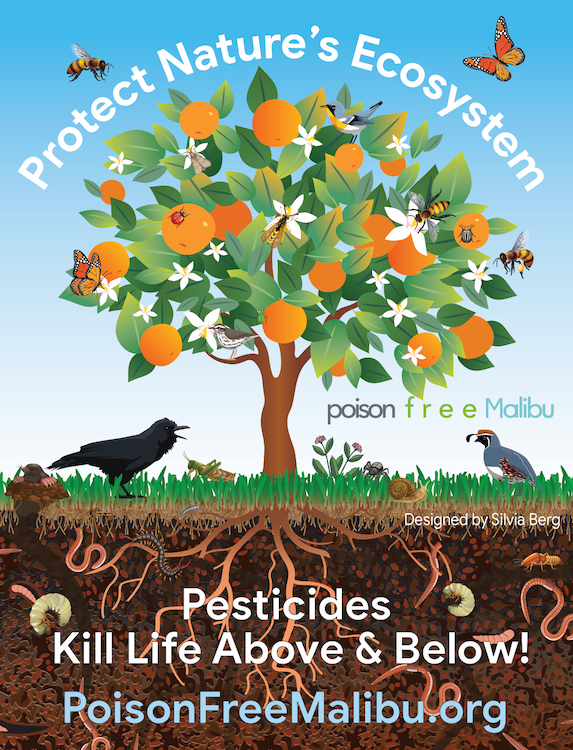
10 Reasons to Say No to Pesticides
1. Pesticides don't resolve the issue.
Repel, Exclude, and Deter tactics are the keys and are essential to SOLVE the issue at hand.
It’s important to change the conditions that allow unwanted guests to thrive.
S.T.E.P. UP! To the plate emphasizing:
S sanitation
T teaching
E environmental enrichment
P preventative actions.
2. Pesticides are hazardous to our health.
Adverse effects of exposure range from mild symptoms of dizziness and nausea to serious, long-term health problems.
Pesticides have the potential to harm the nervous system, the reproductive system, and the endocrine system. After countless studies, pesticides have been linked to cancer, Alzheimer’s Disease, ADHD, autism and birth defects.
3. Pesticides cause special problems for children.
According to the National Poison Data Center over 6000 children are reported poisoned every year.
Children playing increases their potential exposure. A child playing on turf or on a grassy lawn or park treated with pesticides have close contact with the earth.
Pesticides can even be very harmful to fetuses because the chemicals can pass from the mother during pregnancy or if a woman nurses her child.
See this video by University of California Irvine professors.
4. Pesticides contaminate our food.
Even after peeling and washing fruits and veggies, about 60 percent of produce still contains more than one pesticide, says the USDA.
Pesticides are stored in fatty tissue where they slowly poison the body.
For example, a non-organic apple contains over 47 different pesticides that have been sprayed on the apple.
PAN, the Pesticide Action Network, has a website that tells you what’s on your food if you don’t eat organic – What’s on my food?
5. Pesticides harm farming communities.
Agricultural pesticides account for over 75 percent of total U.S. pesticide use. Farmers and farmworkers are often exposed to large amounts of pesticides.
Research shows that they face the risk of acute poisoning and long-term illness.
It has been estimated that between 10 and 20 thousand pesticide-related illnesses occur among farmers and farmworkers every year.
6. Pesticides contaminate our soil and water.
Soils are complex ecosystems containing almost one quarter of the planet’s biodiversity. A handful of soil contains an estimated 10 to 100 million organisms. See our Organic Land Management page to understand what pesticides do the soil.
In 71% of cases studied, pesticides killed or harmed soil invertebrates including earthworms, ants, beetles and ground nesting bees. Negative effects across all studied pesticide classes showed that as a set of chemical poisons, pesticides pose a clear hazard to soil life and are incompatible with healthy soil ecosystems.
A Scientific American article summarizing this work is at Pesticides Are Killing the Organisms That Keep Our Soils Healthy.
According to a national study, 90% of our nation’s urban streams are contaminated with pesticides.
Pesticides leach into our water supply through soil erosion and agricultural runoff.
When pesticides contaminate water they can be particularly toxic to fish.
Other marine or freshwater animals are endangered by pesticide contamination.
Routine use of pesticides perpetuates the propensity for runoff, groundwater infiltration, and cumulative and largely irreversible damage to invertebrates, all of which raise significant environmental concerns.
7. Pesticides are dangerous to pets.
Poisoning of pets is common. For example, the American Society for the Prevention of Cruelty to Animals Poison Control Center handled 6,639 calls related to rodent poisons in 2009.
Read here about How Lawn Chemicals and Herbicides Affect Dogs.
8. Pesticides kill non-target wildlife.

See statistics here.

- Protecting pollinators and reversing the insect apocalypse is imperative.
- Over 75% of insect abundance has declined over the last 27 years.
- The monarch butterfly population in California has declined 92%.
- If we lose the insects then everything will collapse.
- Our food supply is heavily dependent on the pollinator population.
- Birds that feed on insects are also in desperate trouble.
9. Pesticide "Health & Safety Testing" is conducted by chemical companies.
The Environmental Protection Agency does not conduct independent studies. They rely on the chemical companies to do the testing.
10. Pesticides have too many secrets.
Where are they used? When? How much? What’s in them?
Many have a secret ingredient list.
Many persist in the environment and synergize when combined.
Inactive ingredients are really not inactive at all.
Bottom line is to use organic products, if necessary, which biodegrade easily with all ingredients are clearly labeled. Those approved by the Organic Materials Research Institute(OMRI), by the National Organic Program, or similar programs, can be considered.
The EPA has determined that certain “minimum risk pesticides” pose little to no risk to human health or the environment, and has exempted them from the requirement that they be registered under the Federal Insecticide, Fungicide, and Rodenticide Act (FIFRA).




